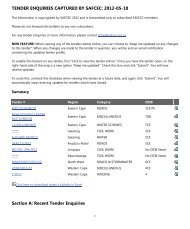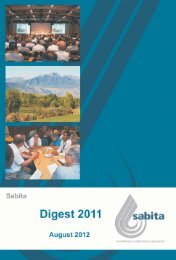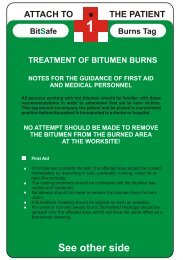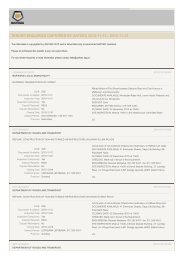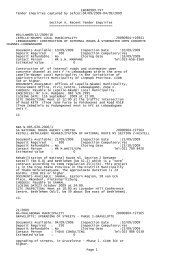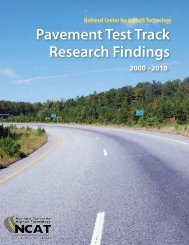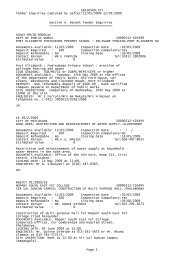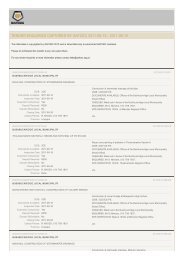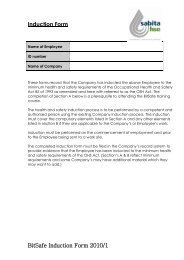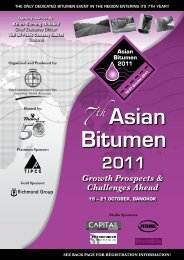DIGEST 2006 - Sabita
DIGEST 2006 - Sabita
DIGEST 2006 - Sabita
You also want an ePaper? Increase the reach of your titles
YUMPU automatically turns print PDFs into web optimized ePapers that Google loves.
Or more appropriately, a lone thar<br />
bleating on the mountaintop?<br />
<strong>Sabita</strong>'s August <strong>2006</strong> edition of<br />
Asphalt News has a short article<br />
on research done by NCAT (USA)<br />
on Lift Thickness versus Nominal<br />
Maximum Aggregate Size<br />
(t/NMAS). (NMAS = 1 size larger<br />
than the first sieve to retain more<br />
than 10%). This extensive<br />
research can be found on the<br />
following website:<br />
www.eng.auburn.edu/centre/ncat/<br />
reports.<br />
The report says it all in these<br />
“deep and meaningfuls":<br />
• Mixes with larger maximum<br />
size aggregates have larger<br />
voids that are more likely to<br />
be inter-connected, resulting<br />
in higher permeability;<br />
• As density decreases,<br />
permeability increases;<br />
• As thickness decreases,<br />
permeability increases;<br />
• Therefore mats that are<br />
thicker, with higher<br />
density and smaller<br />
maximum size aggregate<br />
will be less permeable.<br />
Figure 1 is a chart from this<br />
research and shows the effect of<br />
t/NMAS on permeability. It is a<br />
trend curve for a variety of<br />
fine-graded mixes, and NCAT's<br />
recommendation is:<br />
t/NMAS should be at least 3:1<br />
(Note the “at least")! Our<br />
traditional mix is 1.9:1, which<br />
from Figure 1 indicates it may be<br />
60% more permeable than if it<br />
was 3:1.<br />
Oh dear, is our sacred cow in<br />
danger of becoming mincemeat?<br />
Figure 1<br />
121



